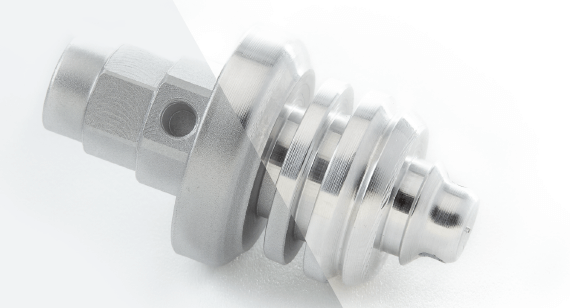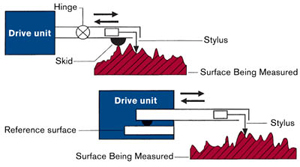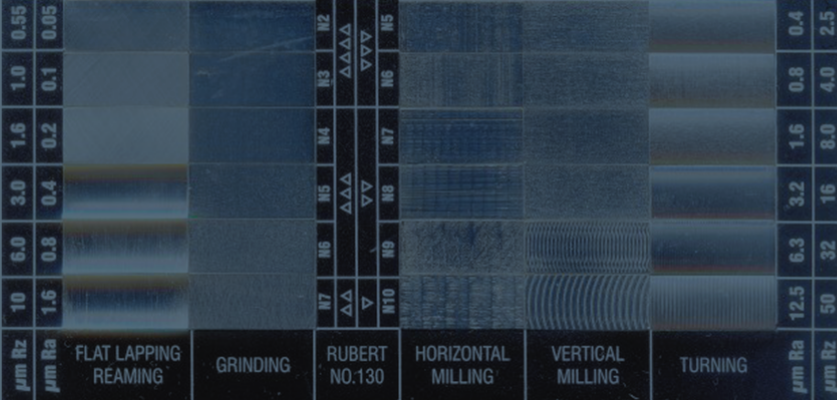Table of Contents
Surface finish is a crucial aspect of machining that determines the quality and precision of the final product. It refers to the texture, roughness, and appearance of the surface of a machined part or component. The surface finish of a workpiece can affect its functionality, durability, and overall aesthetic appeal.
In machining, the surface finish is achieved through various techniques such as grinding, polishing, and honing. The choice of method depends on the material being machined and the desired finish. Surface finish plays a significant role in industries such as aerospace, automotive, and medical where precision and quality are paramount. Understanding the importance of surface finish in machining is critical to achieving the desired results and producing high-quality products.
Understanding Surface Finish in Machining
Surface finish is a critical factor in machining that determines the quality and functionality of a machined part. It refers to the texture, roughness, or smoothness of the surface of the metal workpiece after the machining process is completed. A good surface finish is essential for improving the durability, performance, and aesthetics of the machined part.
What is Surface Finish?
Surface finish is the term used to describe the texture or roughness of a machined part’s surface. It is measured in micro-inches or micrometers, and the lower the value, the smoother the surface finish. Surface finish is essential because it affects the part’s performance, durability, and functionality. A good surface finish minimizes friction and wear, improves aesthetics, and enhances the part’s corrosion resistance.
The surface finish is determined by various factors such as the machining process, the cutting tool’s condition, the feed rate, the cutting speed, and the depth of cut. Machining processes such as milling, turning, grinding, and drilling produce different surface finishes. The selection of the right machining process and tooling is crucial for achieving the desired surface finish.
Types of Surface Finishes
There are various types of surface finishes in machining, and they are classified based on their texture and roughness. The following are some common types of surface finishes:
- Roughness: This finish is characterized by a rough surface texture that is achieved by using a coarse cutting tool or a low cutting speed.
- Smooth: This finish is characterized by a smooth surface texture that is achieved by using a fine cutting tool or a high cutting speed.
- Matte: This finish is characterized by a non-glossy surface texture that is achieved by using abrasive pads or media blasting.
- Polished: This finish is characterized by a high-gloss surface texture that is achieved by using polishing compounds and buffing wheels.
Each type of surface finish is suitable for specific applications, and the selection of the right finish depends on the part’s function and requirements.
Benefits of a Good Surface Finish
A good surface finish offers several benefits, including:
- Improved functionality: A smooth surface finish reduces friction and wear, which improves the part’s functionality and extends its lifespan.
- Better aesthetics: A smooth and polished surface finish enhances the part’s appearance, making it more attractive and appealing.
- Corrosion resistance: A good surface finish protects the part from corrosion by preventing moisture and other contaminants from penetrating the surface.
- Reduced manufacturing costs: A good surface finish reduces the need for further processing and finishing, which lowers manufacturing costs.
Surface Finish vs. Machining Tolerance
Surface finish and machining tolerance are two critical factors in machining that affect the part’s quality and functionality. Machining tolerance refers to the allowable deviation from the part’s specified dimensions, while surface finish refers to the texture or roughness of the part’s surface.
While they are different, machining tolerance and surface finish are interrelated. A tight machining tolerance requires a good surface finish because any surface imperfections can cause the part to fail. On the other hand, a loose machining tolerance allows for a rougher surface finish because the part’s function is not as critical.
Factors That Affect Surface Finish
Several factors affect the surface finish in machining, including:
- The machining process: Different machining processes produce different surface finishes.
- The cutting tool condition: A worn or damaged cutting tool can produce a poor surface finish.
- The cutting speed: A high cutting speed produces a smoother surface finish.
- The feed rate: A higher feed rate produces a rougher surface finish.
- The depth of cut: A deeper cut produces a rougher surface finish.
It’s essential to consider these factors when selecting the right machining process and tooling to achieve the desired surface finish.
Conclusion
In conclusion, surface finish is a critical factor in machining that determines the part’s quality, durability, and functionality. A good surface finish offers several benefits, including improved functionality, better aesthetics, corrosion resistance, and reduced manufacturing costs. Understanding the different types of surface finishes and the factors that affect them is essential for selecting the right machining process and tooling to achieve the desired surface finish.
Freequently Asked Questions
Surface finish is a critical aspect of machining that can affect the performance and quality of the final product. In this section, we will answer some frequently asked questions about surface finish in machining.
What is Surface Finish in Machining?
Surface finish in machining refers to the overall texture, smoothness, and quality of the surface of a part or component after it has been machined. It is a critical aspect of the manufacturing process, as it can affect the performance, functionality, and durability of the finished product.
Surface finish is typically measured in units of roughness, such as Ra or Rz, which indicate the average roughness of the surface over a certain distance. The desired surface finish will depend on the application and the specific requirements of the part or component.
Why is Surface Finish Important in Machining?
Surface finish is important in machining for several reasons. First, it can affect the performance and functionality of the finished product. For example, a rough surface finish can increase friction and wear, reducing the lifespan of the part or component.
Second, surface finish can also affect the appearance and aesthetics of the finished product. A smooth, polished surface finish can enhance the visual appeal of a part or component and make it more attractive to customers.
How is Surface Finish Achieved in Machining?
Surface finish in machining is achieved through a combination of cutting tools, machining parameters, and finishing processes. The cutting tool geometry, feed rate, and depth of cut can all affect the surface finish of a part or component.
Finishing processes such as grinding, honing, or polishing can also be used to achieve a desired surface finish. These processes can remove any remaining roughness or imperfections on the surface of the part and improve its overall quality.
What Factors Affect Surface Finish in Machining?
Several factors can affect the surface finish in machining, including the cutting tool geometry, machining parameters, material properties, and finishing processes. The type of material being machined can also have a significant impact on the surface finish.
The size and shape of the part or component being machined can also affect the surface finish. For example, internal features such as holes or grooves may require different machining parameters or finishing processes to achieve the desired surface finish.
How is Surface Finish Measured in Machining?
Surface finish in machining is typically measured using specialized equipment such as a profilometer or surface roughness tester. These instruments measure the average roughness of the surface over a certain distance, typically in units of micrometers or microinches.
The desired surface finish will depend on the specific requirements of the part or component and may be specified in the manufacturing drawings or specifications.
In conclusion, surface finish is an important aspect of machining that involves the quality and texture of the final product. Achieving a desirable surface finish involves using the right tools, techniques, and processes. It can affect the functionality, durability, and overall appearance of a product.
A smooth surface finish can enhance the performance of a product by reducing friction and wear, while a rough surface finish can provide better adhesion and grip. Surface finish is measured using different parameters such as roughness, waviness, and form. These parameters can be controlled and improved through various machining operations such as grinding, polishing, and honing.
In summary, understanding the importance of surface finish in machining is crucial in the manufacturing industry. It can impact the quality, efficiency, and cost-effectiveness of the final product. By utilizing the appropriate machining techniques and tools, engineers and manufacturers can achieve the desired surface finish for their products, ensuring customer satisfaction and success in the market.
Request a quote today!
[contact-form-7 id="1578" title="Contact form"]
Please compress the file into a ZIP or RAR file before uploading. Alternatively, send through your RFQ by email.
enquires@unitymanufacture.com





